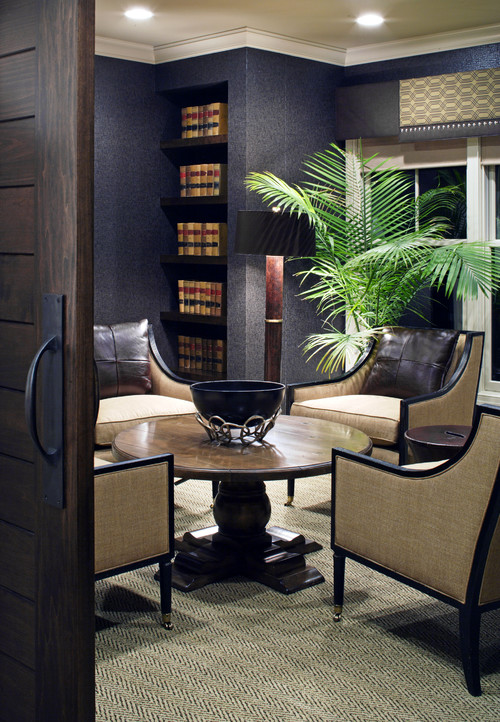TOP 5 BEST INDOOR PLANTS
Houseplants enrich interiors with organic appeal and tranquil nature-inspired style. Certain species stand out as go-to choices among designers and decor enthusiasts thanks to their attractive forms, air-purifying properties, and ease of care. These five beautiful indoor plants get incorporated frequently into stylish, livable spaces.
See which five indoor plant species designers love to use in home interiors. Find out what makes these beautiful plants so appealing as decor pieces and how to creatively incorporate them into your living space for an inviting dose of organic style.
█ Monstera Deliciosa – Split-Leaf Plant
The monstera deliciosa, also called the Swiss cheese plant, is loved for its glossy leaves that split and perforate dramatically as they mature. The leaves develop intriguing holes and notches along the edges, while maintaining a lush, vivid green color. Monsteras originally hail from tropical climates, so they thrive indoors in bright, humid conditions. Their trailing stems and vines look beautiful draping down from shelving, climbing structures and suspended baskets. The leaves can spread up to two feet wide at maturity.
Interior designers gravitate towards the Monstera for its jungle-inspired aesthetic. The plant has an exotic, tropical vibe that pairs well with natural wood, rattan furniture, warm tones, and bohemian or eclectic decor.
The eye-catching splits and holes make an artistic statement without feeling overly manicured or formal. Monsteras work wonderfully as living art pieces, creating focal points on wall shelves, sideboards, coffee tables and floor stands. Their cascading vines soften hard edges and add fluidity to a room’s shapes and lines.
Caring for a Monstera is low maintenance, as long as it gets adequate bright, indirect sunlight and regular watering. Mist the leaves occasionally to maintain humidity. Trim back wayward stems if needed, or use plant velcro ties to train vines along supports. Repot when the roots outgrow the container.
Monsteras are not toxic to humans or pets, making them safe choices. For an effortless dose of tropical flair, add a monstera plant or two into your living space.
█ Olive Tree
Olive trees may originate in the Mediterranean, but their sculptural twisted forms work beautifully indoors as living art pieces. The olive tree’s iconic gnarled trunk and silvery green foliage have come to symbolize peace, wisdom and prosperity.
For millennia, olive trees have been prized by cultures worldwide. Miniature varieties of these ancient trees are perfect for decorating indoor spaces with natural sculpture.
Interior designers value olive trees for their unique draping shapes and textural appeal. The twisted trunks and branches appear beautifully organic and rustic. Olive trees set a tranquil, Zen mood with their soothing gray-green and silver colors. Their forms feel both solid and fluid.
Designers use olive trees as striking focal points in minimalist and contemporary rooms. The organic lines contrast modern decor nicely. Their air-purifying qualities also boost indoor air quality.
Caring for a potted olive tree involves bright light exposure, warm temperatures, and allowing soil to dry out between moderate watering. Mist olive tree leaves occasionally for added humidity. Watch for pests like aphids or sooty mold. With proper care, olive trees can thrive for years indoors. Their otherworldly natural beauty makes olive trees an excellent decorative investment.
What You Need To Know Before You Buy An Olive Tree
With their twisted sculptural trunks and silvery foliage, olive trees make gorgeous living art for contemporary interiors. But before bringing one home, there are some important factors to consider first.
■ Decide on Variety. There are over 2,000 varieties of olive trees, from short bushy types under 10 feet to towering trees. Smaller compact varieties in the 8-12 foot range work well indoors. Arbequina, Arbosana and Leccino are popular ornamental cultivars. Pick one suitable for your space.
■ Determine Light Needs. Olive trees thrive in direct light indoors. South or west facing windows are ideal. Supplement with grow lights if needed. In low light they may lose leaves or succumb to pests. Ensure your space has adequate sunny spots.
■ Consider Maintenance. Olive trees are moderately demanding. Allow soil to partly dry out between watering and mist leaves for humidity. Wipe dust off leaves regularly and watch for pests like spider mites. Expect some litter from dropped foliage. Occasional pruning encourages branching.
■ Research Its Origins. Know where the olive tree came from. Nursery grown varieties already acclimated to indoor conditions adapt better than wild-harvested trees. Import regulations also apply for olive trees from abroad.
■ Pick The Right Size. Don’t overwhelm your space. Smaller olive trees in the 4-6 foot range make the best houseplants. Miniatures under 3 feet suit desktops. Measure doorways and ceilings to ensure it fits into your home.
■ Know Its Longevity. Olive trees enjoy remarkable longevity, often living for centuries. With proper indoor care they can thrive for decades in homes. Consider it a long-term commitment and heirloom piece.
■ Prep For Its Arrival. Have the ideal sunny spot picked out and any supplies needed before bringing your olive tree home. Amend soil with perlite for drainage. Allow time to acclimate before placing in its permanent home.
With their ancient world appeal and sculptural look, olive trees make timeless living sculptures. Do your homework on variety, lighting needs, maintenance, sourcing and size before investing in this heirloom plant.
█ Ficus Lyrata – Fiddle Leaf Fig
The gracefully imposing Ficus lyrata, also called fiddle leaf fig, earns its popularity with broad spreading branches covered in extra-large, violin-shaped leaves up to 14 inches long. Their bold size, eye-catching silhouette, and striking sage green color make ficus trees natural focal points. Fiddle leaf figs command attention wherever they are positioned.
Interiors featuring fiddle leaf figs tend to have an elegant, collected look. The statuesque trees pair well with marble, brass, leather and polished wood accents. Their towering height draws eyes dramatically upward, giving warmth to rooms with high ceilings. Designers also love incorporating fiddle leaf figs into entryways and hallways as natural living sculptures.
Caring for ficus trees requires bright filtered light, moderate watering and humidity. Dust the waxy leaves regularly and watch for pests. While somewhat tricky to master, fiddle leaf figs lend rooms a sense of distinct sophistication. Their aesthetic impact and purifying abilities make investing in a ficus tree well worth the commitment.
What You Need To Know Before You Buy a Fiddle Leaf Figs
■ Pros of Fiddle Leaf Figs:
- Striking, oversized violin-shaped leaves create drama
Towering height draws eyes up - Warm green color suits various decor styles
- Purifies air by removing toxins
- Sculptural form works as living art
■ Cons of Fiddle Leaf Figs:
- Require very bright, indirect light
- Sensitive to being moved or repotted
- Prone to leaf drop if stressed
- Occasionally susceptible to pests like spider mites
- Large size needs generous room to grow
- Expensive compared to other houseplants
■ Before Buying a Fiddle Leaf Fig:
- Ensure space has bright filtered light from windows or grow lights
- Be prepared to allow time to adjust to any location changes
- Water sparingly but keep humidity high with misting
- Inspect for pests and quarantine new plants
- Expect some finicky behavior and leaf loss as it acclimates
- Have a budget for the $100+ investment for a sizable specimen
The dramatic fiddle leaf fig makes a statement in any home but requires some finesse and care to flourish indoors. If given the right conditions and patience through adjustments, this prima donna plant will reward you with its air-purifying elegance.
█ Strelitzia – Tailored Tropical Style with Bird of Paradise Blooms
Finally, the unmistakable orange and indigo flower spikes of strelitzia bird of paradise plants make them a popular choice. Towering stalks emerge from bushy leaf bases, topped with brilliant flowers resembling crane bills. The beaked blooms contrast beautifully with the long, erect leaves in tones of green to grey-blue. Native to South Africa, strelitzias lend tailored tropical flair.
Designers love showcasing bird of paradise flowers as living sculptures. The graphic, high-contrast blooms feel both dramatic and refined. Strelitzia plants project color while the strict leaves echo architectural lines. This makes bird of paradise ideal for modern and contemporary spaces. Place in an entryway or large bathroom for an artistic punch. Strelitzias also purify inodors by removing benzene, formaldehyde and carbon monoxide.

█ Areca Palm – A Fountain of Green to Freshen Up Rooms
Areca palms, often called butterfly palms due to the shape of their leaves, are prized for their lush, feathery fronds. Clusters of gracefully arching stems burst from the tops of areca palms, overflowing with rich verdant leaves. Their buoyant, abundant foliage fills spaces with organic vibrancy. Areca palms range from compact tabletop sizes to towering room accents over six feet tall.
Interior designers regularly rely on areca palms to revitalize living spaces with fresh color and life. The flowing fronds feel both contemporary and reminiscent of the tropics. Palms work in any style from bohemian and eclectic spaces to modern, airy rooms. Their air-purifying capabilities eliminate airborne toxins. Designers also love using areca palms in entryways and communal areas where their welcoming energy uplifts.
Areca palms need bright indirect sunlight. Allow soil to partly dry between waterings and mist occasionally. Remove yellow fronds promptly and watch for pests on the stems. With some simple care, areca palms flourish to fill interiors with their graceful, abundant greenery and purifying abilities.
Table of Contents






